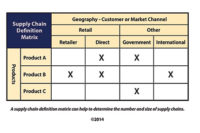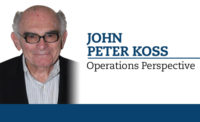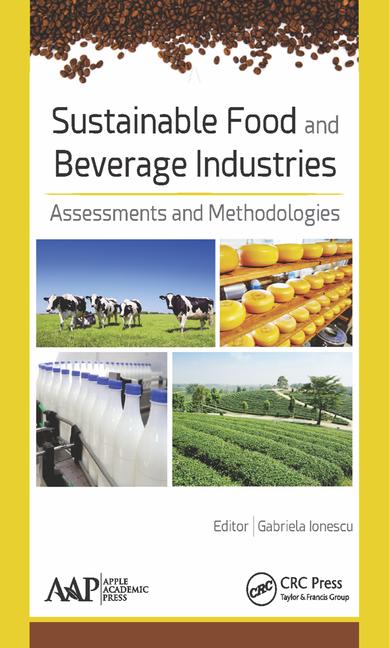![]()
Scor Model: Supply Chain operations Reference Model
As you have been following
my series of logistics articles, which I know you all have, there may have
been an occasional point when you thought to
yourself, “Like all of Ned’s articles, this subject is very
interesting, but it really doesn’t apply to my particular
situation.” Therefore, as I was on the beach last week knocking down
a few cold b---s, I mean sodas, I was trying to think about a topic that
could apply to anyone in any supply chain situation. I wracked my brain
thinking through all past conferences, client meetings and phone calls I
have had over the years to find a universal topic. And just like that, it
hit me... standards and structure. It was one of those instances we have
all experienced where the answer was so close I could not see it. Every
conversation I engage in, it seems, has some level of standards and
structure subplot. With all of this said, I feel that the SCOR Model, a
globally accepted standard in the supply chain arena, was the logical
choice to discuss with you.
Although I had heard of the SCOR Model on several
occasions, I didn’t really understand SCOR or think about how to
apply the SCOR Model to the beverage industry until I met Peter Bolstorff.
Peter is the president and chief executive officer of SCE Ltd., a supply
chain education consulting firm, and one of the nation’s leading
experts on the SCOR Model. Peter has undertaken numerous client assignments
to train organizations on its application. Until I was exposed to the
components and application of the SCOR Model by Peter, I was of the mindset
that supply chain improvement initiatives should always begin with a thorough logistics network analysis, as
described in my August 2003 article, “First and Foremost, Evaluate
Your Distribution Network.” The logic described in that article is
still fundamentally sound if an organization has control of its existing
supply chain. Often, however, this is not the case. If an organization does
not have control of its supply chain or the support from senior management
to fund supply chain improvement initiatives, then the place to begin is
with a SCOR Model. Here are the highlights of the SCOR Model.
What is the SCOR Model?
The SCOR Model is a process reference model that the
Supply Chain Council developed and endorsed as the cross-industry standard
for supply chain management.
Approximately 70 of the world’s leading
manufacturing companies participated in SCOR’s development. SCOR
provides a glossary of definitions, metrics and process elements. It
defines a supply chain as the integrated
processes of Plan, Source, Make and Deliver, spanning your suppliers’
supplier to your customers’ customer, aligned with operational strategy,
material, work and information flows.
The creation of public application of the SCOR Model
followed in the form of the SCOR Project Road Map. The SCOR Project Road
Map has four process elements, all of which exist in beverage
organizations. Process elements include:
Plan: Demand/supply planning elements of supply resources,
demand requirements, plan inventory, distribution require- ments, production,
material and rough-cut capacity for all prod - ucts and all channels.
Source: Sourcing infrastructure and material acquisition.
Make: Production and execution elements.
Deliver: Order management, warehouse management and transportation/installation com- ponents.
A fifth process element, Return, which by circumstance is critical to beverage companies using the direct-store-delivery go to market strategy, was added later.
Source: Sourcing infrastructure and material acquisition.
Make: Production and execution elements.
Deliver: Order management, warehouse management and transportation/installation com- ponents.
A fifth process element, Return, which by circumstance is critical to beverage companies using the direct-store-delivery go to market strategy, was added later.
The roadmap is divided into four segments:
Analyze your basis of competition, which focuses on operations strat- egy.
Configure your supply chain material flow.
Align performance levels, practices and systems of your information workflow.
Implement the supply chain changes based on the design.
Analyze your basis of competition, which focuses on operations strat- egy.
Configure your supply chain material flow.
Align performance levels, practices and systems of your information workflow.
Implement the supply chain changes based on the design.
What is the value of the SCOR Model?
As a process reference model, SCOR combines the well-known concepts
of business process reengineering with benchmarking, best practices and process
measurement into a “one-stop shopping” framework for executing a
supply chain project. It is a reliable methodology with predictable cost/benefits
such as:
-Two to six times return on invest- ment within 12 months
-Full leverage of capital investment in systems
-Creation of an investment road map
-Alignment of business require- ments with central functions
-Two to six times return on invest- ment within 12 months
-Full leverage of capital investment in systems
-Creation of an investment road map
-Alignment of business require- ments with central functions
Self-funding of technology
invest- ments
But in my mind, the most important aspect is the
ability to measure strategy. Some companies are good at creating strategy,
but very few are good at measuring the success or failure of strategy.
Measuring strategy, of course, implies that you develop a strategy and
follow it. I have participated in many projects over the years that have a
component in their strategy for measuring success or failure. However,
rarely did someone actually conduct such a measurement. That is one of the
primary values of the SCOR Model — it’s an effective tool for
translating strategy into supply chain performance goals. It helps
prioritize supply chain needs, drives implementation and links performance
metrics to the profit and loss statement.
How will the SCOR Model improve supply chain
performance?
The SCOR Model is an extremely effective tool for
translating strategy into supply chain performance goals. It helps
prioritize supply chain needs, drives implementation and accelerates ROI by
linking performance metrics to the profit and loss statement. SCOR helps
identify and fix current issues that are vital to a company’s
strategic goals. By following the SCOR project road map, you will identify
disconnects in your supply chain planning process that you must resolve
through supply chain optimization methods.
Standards, benchmarking, best practices, continuous
improvement, synergy, collaboration … the list goes on and on.
Companies talk about performance improvement initiatives across many fronts
with a vehicle to get them where they want to go. Developing a SCOR Model
is a vehicle to attack many fronts and provide the foundation to achieve
supply chain efficiency. BI




